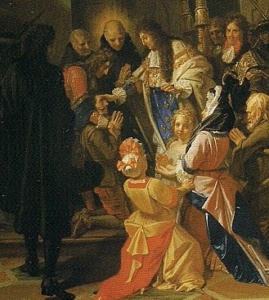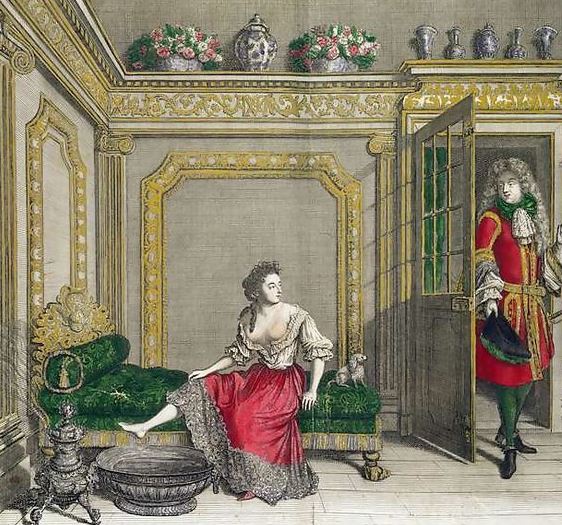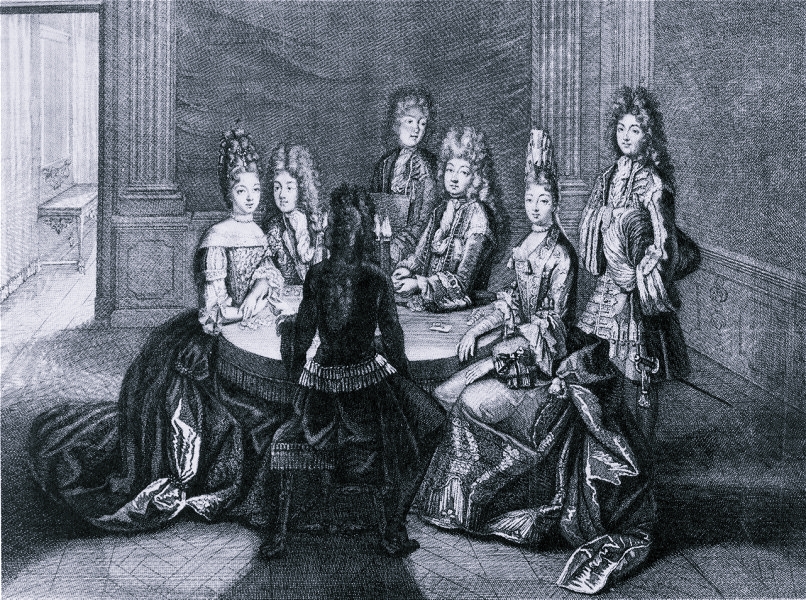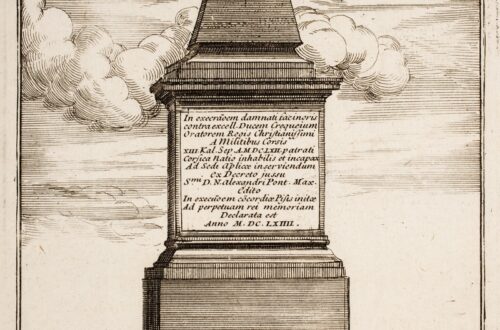The King’s Evil and the Royal Touch
A King, appointed by God and anointed with Holy Oil, is not a mere human being. He holds the well-being of his Kingdom and subjects in his regal hands and said hands are able to cure… or so many people believed.

The English Kings and Queens as well as the Kings of France were the only Christian rulers who claimed to have the divine gift to heal maladies by touching or stroking an ill person. This gift was thought to be the evidence of the high esteem God had for them. Since England and France had a hard time to agree on many matters, the question who was granted said gift first was no exception.
In England it was believed Saint Edward the Confessor (1042–1066) was the first to be granted the power of healing. The French fiercely denied it and claimed Saint Edward the Confessor never had the Royal Touch and insisted it was Henry I (1100–1135) who first used it, as a politically influenced imitation of the gift granted exclusively to French monarchs.
The French themselves argued their Kings were granted the gift as early as the time of Philippe I (1059–1108) or even Robert II (987–1031). The 16th century physician André du Laurens claimed it even dates back to the reign of Clovis I (481–511), saying he was the first King to touch and heal people.
The idea that the King was able to heal by touching, and thus demonstrate God was agreeable with him, was cemented into the heads of his subjects by the time of the Late Middle Ages. It then was integrated into the coronation ceremony at Reims by anointing the hands of the new King, which was believed to confer the ability to cure to him. But in order to use it, the King needed to visit the shrine of shrine of Saint Marcouf at Corbeny first. Once the pilgrimage was completed, the King was believed to have the full divine gift to cure.
…but what was cured? A disease called Mycobacterial cervical lymphadenitis, better known as scrofula or the King’s Evil. Scrofula is the term used for lymphadenopathy of the neck, usually as a result of an infection in the lymph nodes, known as lymphadenitis. It can be caused by tuberculous or non tuberculous mycobacteria… and of course it was not really cured. The disease rarely resulted in death and often went into remission on its own, giving the impression that the monarch’s touch cured it, which of course could serve as a tool to legitimise the reign of a King. This was the case with Henri IV, the grandfather of Louis XIV.
Before Henri IV became Henri number 4 of France, the Kingdom was ruled by Henri III, who led a bit of an immoral life at times. Since France was also at war during the end of Henri III’s reign, the general living conditions of his subjects were not the best and this helped scrofula to spread like crazy. Thus those on the opposite side of Henri III claimed his immoral lifestyle made God revoke the Royal Touch. After Henri III died and Henri IV took the throne, the same people argued that God would revoke the Royal Touch forever if France would accept this new Henri as King, because said Henri was not Catholic, and if God would take the gift, everyone would sooner or later die of scrofula. Not good.

Henri IV, smartly so, used it for his advantage. After converting to Catholicism, he led it be known that he intended to use his Royal Touch to cure all those suffering of the disease… but there was a bit of a problem. Henri’s coronation did not take place in Reims, but in Chartres, hence he never made the pilgrimage to the shrine. Le bon roi Henri had a solution for that by claiming it did not matter if he visited the shrine or not, for he was still King by God’s grace and consequently able to perform the Royal Touch, since it was granted by God.
Two weeks after his coronation, Henri IV got his Royal Touch out and luckily for him, quite a lot of people seemed cured afterwards, which showed everyone that he was the rightful King. Le Roy te touche et Dieu te guerit.
Those royal-touching ceremonies took place in various cities and at least four times a year: on Easter, on Pentecost, on All Saints Day and on Christmas. On Easter 1608, Henri IV touched 1250 scrofulous victims in a ceremony lasting for long hours. It exhausted him quite a bit, but he continued nevertheless.
Both Louis XIII and Louis XIV carried on to perform the ceremonies. Louis XIV did it already as a little boy with great ceremony and later, on Easter in 1680, bestowed his Royal Touch upon 1600 people on this one occasion alone. Over the course of his reign, Louis XIV was said to have touched, and probably “healed”, around 350000 people.
Of course, not everyone believed that the touching could really cure. Voltaire, for example, cheekily wrote after a love-interest of Louis XIV died of scrofula that he lost confidence, because the lady died “despite being very well touched by the King“.
Louis XV was sceptical about the Royal Touch too. He performed it early in his reign, but caused a scandal when he failed to summon the scrofulous at Eastertide in 1739 and never again touched the diseased. Louis XVI revived the custom at his coronation on 11 June 1775 by touching 2400 people, probably the only time he ever did it. At his coronation on 29 May 1825, Charles X touched 121 of his subjects and afterwards the Royal Touch was never again employed in France.




